
Partita was originally the name for a single-instrumental piece of music, but Johann Kuhnau, his student Christoph Graupner, and Johann Sebastian Bach used it for collections of musical pieces, as a synonym for suite.
Georg Böhm was a German Baroque organist and composer. He is notable for his development of the chorale partita and for his influence on the young J. S. Bach.

The sonatas and partitas for solo violin are a set of six works composed by Johann Sebastian Bach. They are sometimes referred to in English as the sonatas and partias for solo violin in accordance with Bach's headings in the autograph manuscript: "Partia" was commonly used in German-speaking regions during Bach's time, whereas the Italian "partita" was introduced to this set in the 1879 Bach Gesellschaft edition, having become standard by that time. The set consists of three sonatas da chiesa in four movements and three partitas in dance-form movements. The 2nd Partita is widely known for its Chaconne, considered one of the most masterly and expressive works ever written for solo violin.

Cutworms are moth larvae that hide under litter or soil during the day, coming out in the dark to feed on plants. A larva typically attacks the first part of the plant it encounters, namely the stem, often of a seedling, and consequently cuts it down; hence the name cutworm. Cutworms are not worms, biologically speaking, but caterpillars.
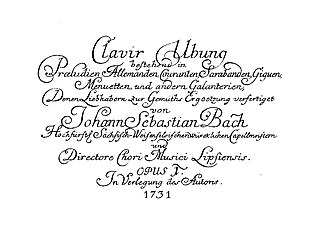
The Partitas, BWV 825–830, are a set of six keyboard suites written by Johann Sebastian Bach, published individually beginning in 1726, then together as Clavier-Übung I in 1731, the first of his works to be published under his own direction. They were, however, among the last of his keyboard suites to be composed, the others being the six English Suites, BWV 806-811 and the six French Suites, BWV 812-817, as well as the Overture in the French style, BWV 831.
Johann Sebastian Bach composed suites, partitas and overtures in the baroque dance suite format for solo instruments such as harpsichord, lute, violin, cello and flute, and for orchestra.

The Partita No. 3 in E major for solo violin, BWV 1006.1, is the last work in Johann Sebastian Bach's set of Sonatas and Partitas. It consists of the following movements:
- Preludio
- Loure
- Gavotte en Rondeau
- Menuets
- Bourrée
- Gigue
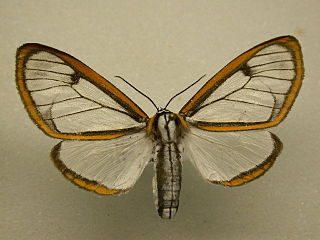
Hyalurga is a genus of tiger moths in the family Erebidae. The genus was erected by Jacob Hübner in 1819.

Thallarcha partita is a moth of the subfamily Arctiinae first described by Francis Walker in 1869. It is found in the Australian states of New South Wales, Queensland and Victoria.

Galgula is a genus of moths of the family Noctuidae.

Pandesma is a genus of moths in the family Erebidae. The genus was erected by Achille Guenée in 1852.
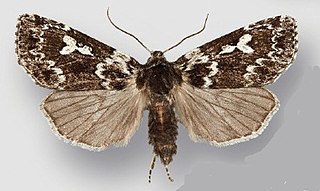
Xestia perquiritata, the boomerang dart, is a moth of the family Noctuidae. The species was first described by Herbert Knowles Morrison in 1874. It is found across North America from Newfoundland, Labrador and northern New England, west to central Yukon, British Columbia and Washington. There are several disjunct populations, including one in the Great Smoky Mountains National Park and the Rocky Mountains in Colorado and a coastal bog in central Oregon.

Galgula subapicalis is a moth of the family Noctuidae. It is found on Jamaica.

Serrodes partita, the catapult moth, is a moth of the family Erebidae. The species was first described by Johan Christian Fabricius in 1775. It is found in western, eastern, central, and southern Africa, India, Indonesia and Sri Lanka.

Chandata partita is a moth of the family Noctuidae first described by Frederic Moore in 1882. It is found in India.
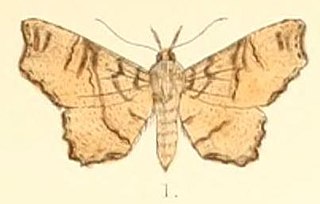
Cultripalpa partita is a species of moth of the family Erebidae first described by Achille Guenée in 1852.
Hyalurga partita is a moth of the family Erebidae. It was described by Francis Walker in 1854. It is found in Brazil, Suriname, French Guiana and Venezuela.
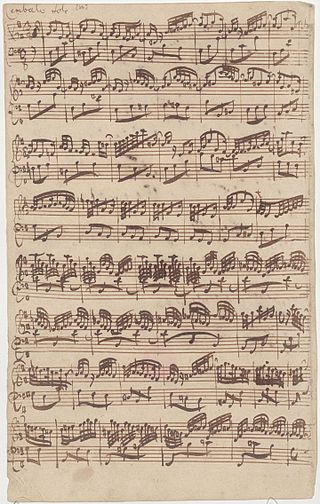
The Partita for keyboard No. 6 in E minor, BWV 830, is a suite of seven movements written for the harpsichord by Johann Sebastian Bach. It was published in 1731 both as a separate work and as part of Bach's Clavier-Übung I.














